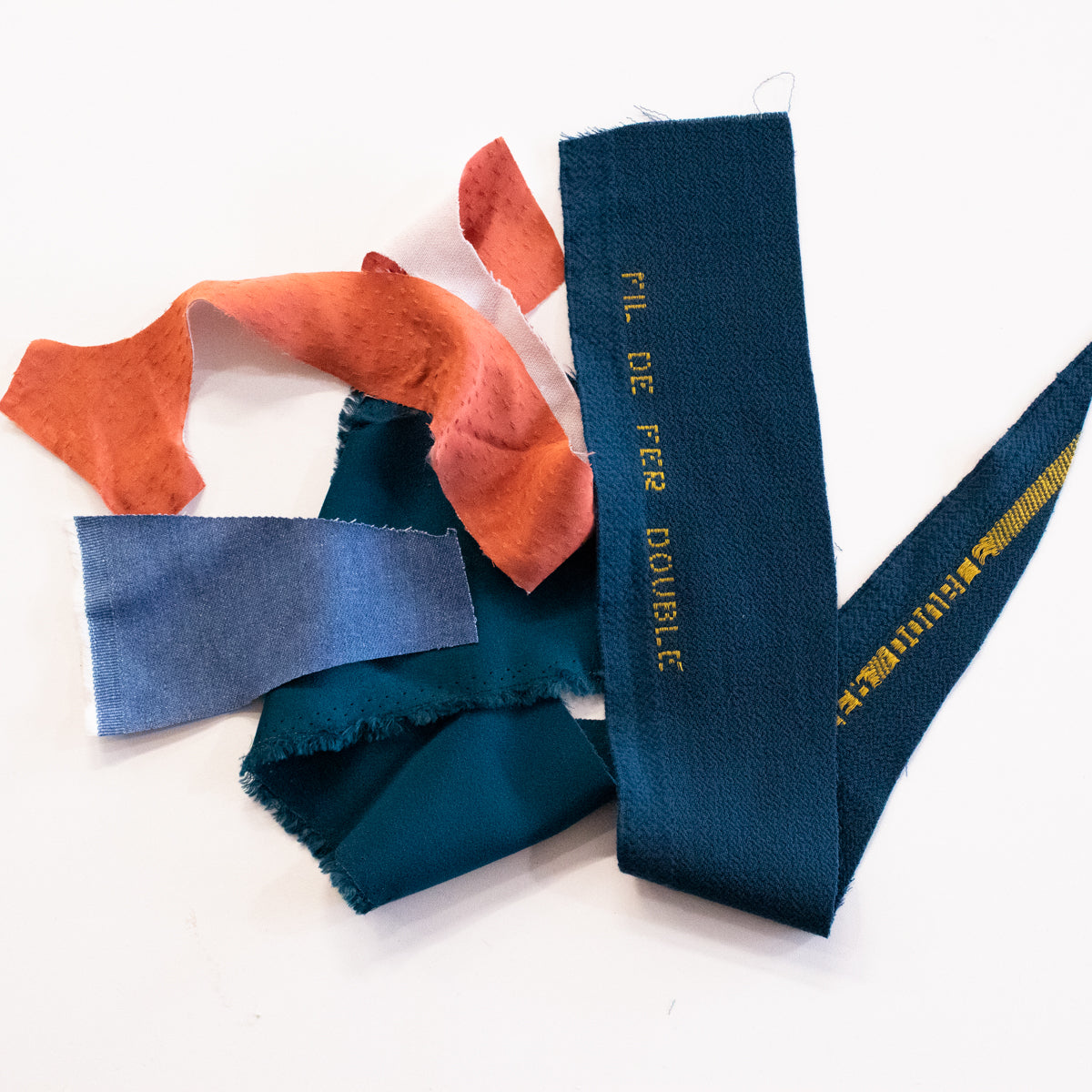
Sustainability: Zero Waste Sewing
What are fabric scraps and offcuts?
Picture yourself rolling out dough for some cute sugar cookies. You arrange the cookie cutters around to try to jigsaw as many of them in as you can. After pressing them and then carefully laying them on the baking sheet, you gather all the "scraps" to be pressed and rolled, and then you repeat the process.
This is very similar to how we cut fabric to make clothing. The fabric is rolled out on the table (sometimes in layers), and paper pattern pieces (kind of like blueprints) are laid on top, traced and cut. Just like with your cookie cutters, they're arranged to maximize efficiency. Factors like the weave of the fabric are taken into account; the vertical grainline (warp) of the fabric usually has to run parallel to gravity when it's sewn into a garment and worn, otherwise it will twist on the body.

The key difference from cookie dough is that the leftover scraps of fabric can't be reused. They can be cut into progressively smaller pieces (think collars, cuffs and pocket linings), but after that, they're destined for the trash can. Depending on the "cutting efficiency" of a given garment, as much as 30% of the fabric can end up as scraps, which when you think of the scale of the global fashion industry... it's a LOT.
Why can't they be recycled? Unlike cardboard or aluminum, fabric has a huge variety of raw material component variety. It could be from a plant, an animal, or a man-made substance - or a blend of each. Synthetic materials like polyester could be melted down and turned into a new plastic good, but they all need to be the same "type" of plastic - almost impossible to tell unless you know which mill made the original fabric.
For this reason, textile recycling has lagged behind other regenerative sectors. There are certainly innovative solutions out there, but they have yet to become mainstream or available to small businesses like us. As a person who feels guilty every time I throw anything in the garbage, it weighed on my conscience to be throwing out so much fabric. I designed our styles with better and better cutting efficiency in mind, but it was impossible to totally eliminate our manufacturing waste.
That's why we started working with a textile recycler. They are few and far between, and it took some negotiating to convince them to take on a client as small as us. We essentially drop off garbage bags of scraps, and they sort and macerate them into home insulation! Around 90% of our scraps can be recycled, and the other 10% is disposed of via a W2E process.
We do get a lot of suggestions for products we could make from our scraps (like scrunchies and quilts). To put it bluntly - if money were no object, we would hire a full time sewer just to do projects like this. But with our fair labour standards, this would be a very expensive undertaking. Though some may look at what we do with our scraps as "downcycling," I like the idea of them being turned into something functional instead of decorative.
Even though this is a paid service, it's worth every penny in terms of environmental benefit. Since 2020 we've diverted THOUSANDS of pounds of textile waste from the landfill. Our scraps get a second life, one that is practical and useful. I still am neurotic about avoiding throwing out fabric, but it's amazing to now throw a handful of scraps into a recycling bin and know that it will be used to make someone's house a little cozier.
So next time you wear your favourite S&S piece, rest easy knowing that it generated zero waste. That, lovelies, is true beautiful design.
-Xo Katelyn
